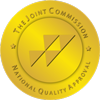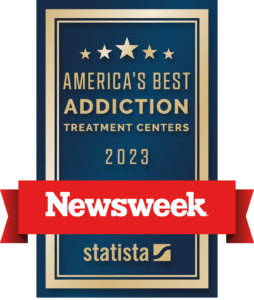Signs of Meth Use and the Journey to Recovery
Meth can be almost instantly habit-forming. Each hit damages key brain receptors. The damage leaves users unable to feel pleasure without it. Crystal meth addiction treatment begins with medical detox. But, successful recovery requires in-depth therapy and chronic care.

Meth Addiction
Methamphetamines or meth is a highly addictive stimulant. It is so powerful that one hit can lead to addiction because it produces a rush of dopamine. Dopamine is a chemical in the brain. It is responsible for feelings of pleasure, motivation, and reward processing.
However, meth causes a higher than normal amount of dopamine to be produced. So, people keep using to feel heightened pleasure. Consequently, many people will continue using it for several days without coming down.
Additionally, the continued use of meth can result in developing a tolerance to meth. Tolerance is requiring more of the drug to feel the same effects. The pleasurable effects and the low cost of meth can quickly lead to addiction.
It can be challenging to stop using meth. To begin with, people can find it hard to be happy without meth. Also, when people stop using meth, withdrawal symptoms begin. The symptoms can be so debilitating it can lead to binge using. A medical detox program is hugely vital in crystal meth addiction treatment.


Facts about Meth
Meth is a central nervous system (CNS) stimulant. It is made from amphetamine and other secondary chemicals. Originally meth was legal and readily available. Furthermore, it was used for weight loss and congestion.
However, it quickly became misused. As a result, the FDA placed restrictions and regulations on meth in 1970. Only one prescription methamphetamine is on the market. Desoxyn treats obesity and severe ADHD.
Meth and crystal meth are the two most popular forms of methamphetamines. Meth is a crystal powder. It is normally white but can be brown, yellow, or pink. Meth is odorless, bitter, and dissolves in liquid. While most users snort, smoke, or inject, it can be compressed into pill form.
Crystal meth is clear or blue. It looks like coarse crystals and is typically smoked. However, many dealers cut meth with other substances. In some cases, meth can be cut with antidepressants or opioids. The results can be hazardous. Some drugs have negative interactions and can lead to overdose.
Even though meth and crystal meth look different, they are the same drug. Other street names for methamphetamines are:
- Glass
- Ice
- Crystal
- Crank
- Tweak
- Redneck cocaine
- Chalk
Most of the meth on the streets come from illegal labs and imports. It is usually cooked in “home labs” in small batches. Also, “super labs” owned by the cartel produce large batches. But cooking meth is very dangerous. The chemicals that are released when cooking meth are toxic and explosive.

The Effects of Meth
Common effects of meth include:
- Elation
- Hyperactivity
- Talkativeness
- Alertness
- Loss of appetite
- Irritability
- Agitation
- Paranoia
- Confusion
- Anxiety
- Insomnia
- Tremors
- Weight loss
“Meth mouth,” tooth decay, and skin sores are common side effects of chronic meth use. Besides, users who regularly inject meth have a higher risk of collapsed veins. Also, users risk catching diseases from used needles.
Additionally, snorting meth damages sinus cavities and nasal passages. Meth can also lead to seizures, heart attacks, strokes, as well as overdose and death. As a result of long term meth use, the brain can have irreversible damage.

How Bad is Meth Addiction in the U.S.?
The 2017 National Survey on Drug Use and Health (NSDUH) states almost 1.6 million people were using meth in 2016. In addition, 774,000 admittingly was using the previous month. In 2016 the average age of meth users was 23.
In 2017 an estimated 964,000 Americans over 12 had a meth problem. That is significantly higher than the 684,000 users in 2016. Of the users in 2017, almost 10,000 had a fatal overdose.
Warning Signs of Meth Use
Meth takes an extreme mental and physical toll on the body. Meth deeply affects the user’s brain. As a result, the signs of meth use are apparent.
One of the first signs of meth use is a loss of interest in activities in life. Careers, relationships, and hobbies take a back seat to meth use. At first, people try to hide their meth use. But, the more they use, the harder it is to hide.
Meth chemically alters the brain and how people think and feel. For this reason, recreational use quickly turns to addiction. Signs of meth use can be visible in behaviors and physicals symptoms.

Common signs of meth use include:
- Hyperactivity
- Twitching, jerking, facial tics
- Paranoia
- Dilated pupils
- Sudden weight loss
- Skin sores
- Rapid eye movements
- Reduced appetite
- Agitation
- Burns on lips and fingers
- Irregular sleep patterns
- Rotting teeth
- Mood swings
Tweaking is another of many signs of meth use. Tweaking is a period of insomnia and anxiety that lasts 3 to 25 days. Tweaking also happens as a result of a meth binge. It causes side effects such as paranoia, irritability, and confusion. This is a result of not being able to get high again. Furthermore, tweaking from meth can cause violent behaviors and hallucinations.
In addition, signs of meth use include the crash phase. During this phase, the body is out of dopamine and causes extreme fatigue. The crash phase can last 1 to 3 days. Symptoms of this phase include intense drug cravings, depression, and an increase in sleeping periods.
Withdrawal Symptoms of Meth
The symptoms of withdrawal vary from one person to the next. Factors including the length of use, how often meth is used, and co-occurring conditions all affect withdrawal severity. In addition, the method of consumption affects withdrawal symptoms. People who inject meth can have a more intense withdrawal process than those who don’t.
Symptoms of meth withdrawal include:
- Dehydration
- Fatigue
- Confusion
- Agitation
- Insomnia
- Excessive sweating
- Fever
- Red, itchy eyes
- Severe depression
- Anxiety
- Tremor
- Nausea
- Suicidal thoughts
The length of the withdrawal period also varies from one person to the next. But, the acute phase peaks typically around day 2 or 3. This phase eases after about a week. However, mental symptoms can last for weeks or months. They can include cravings, mood swings, and sleep issues.
Crystal Meth Addiction Treatment
Crystal meth addiction treatment requires a “whole person” comprehensive approach to recovery. This treatment plan includes detox, counseling, therapy, and holistic therapies. Medical detox safely rids the body of the drug. Counseling treats the mental damage done by meth use. Besides, it educates users on the damage the drug causes and how to resist using it again. Because meth is so powerful, inpatient treatment is recommended for Recovery for Life.
Inpatient crystal meth addiction treatment might be the best treatment for chronic meth users. The severity of lasting withdrawal symptoms can quickly lead to relapse. For example, inpatient treatment offers 24/7 supervision away from the triggers of daily life.
On the other hand, outpatient crystal meth addiction treatment can be successful for a weaker addiction. Furthermore, not all meth users can leave their families or jobs for treatment. Outpatient crystal meth addiction treatment is a good option for them.
Counseling in crystal meth addiction treatment helps users identify why they are using meth. Therapists provide guidance and support as users work through their issues. Therapy teaches coping skills to deal with the temptations of using meth. Therapy helps people identify and correct the thoughts and behaviors that led to addiction.
Therapists use a variety of therapies in treating meth addiction. But, the most common is cognitive-behavioral therapy (CBT). CBT is beneficial in crystal meth addiction treatment. Also, it is useful for treating co-occurring depression and anxiety.
The Matrix Model is also a therapy specifically to treat stimulant addiction. In this type of treatment, the therapist provides support and encouragement. This support helps build self-esteem and self-respect.
Although the FDA has not approved any drugs for crystal meth addiction treatment, there are drugs to help with long-lasting side effects from withdrawal.
- Bupropion is an antidepressant that can improve cognitive function and reduce withdrawal symptoms.
- Methylphenidate is approved to treat ADHD but can reduce to use of meth because it’s a stimulant.
- Naltrexone is used to treat opioid addiction. But, it can potentially reduce cravings for meth.
After crystal meth addiction treatment, it is vital to join support groups. Support groups can be the best method of aftercare. Crystal Meth Anonymous and Narcotics Anonymous are two of the common support groups. These groups offer guidance and support and a sense of friendship for people recovering from meth addiction.
Preventing Relapse in Crystal Meth Addiction Treatment
However, it’s a sign that the root of the issue wasn’t healed completely. For example, say depression existed before meth addiction. But in crystal meth addiction treatment, the person didn’t learn to cope with depression. This results in not being able to cope with depression healthily. Consequently, the person relapses to cope with depression.

Warning Signs of Meth Relapse
It’s essential to know the warning signs of meth use in relapse. Some warning signs may be present weeks before relapse. They can include:
- Feeling overwhelmed with stress and problems
- Bottling up emotions
- Isolation
- Not attending support groups and therapy sessions
- Poor self-care
- Minimizing the risks of meth use
- Talking about the fun times of using meth
- Justifying reasons to use
- Experiencing cravings
It is extremely vital to seek help if any of these signs start to appear. Because trying to handle the stress of recovery alone is never a good idea. It is important to have a strong support system, regularly attend aftercare treatment, and ask for help.
Crystal Meth Addiction Treatment at Sana Lake
At Sana Lake, we understand the challenges of meth addiction. Our crystal meth addiction treatment is a comprehensive “whole person” approach. We offer individualized, evidence-based, and alternative holistic therapies. From medical detox to a variety of aftercare services, our staff is with you each step of the way.
So, what are you waiting for? Start your road to recovery today, and find a lifetime of happiness free from addiction. Contact us today and find out how Sana Lake can help.



